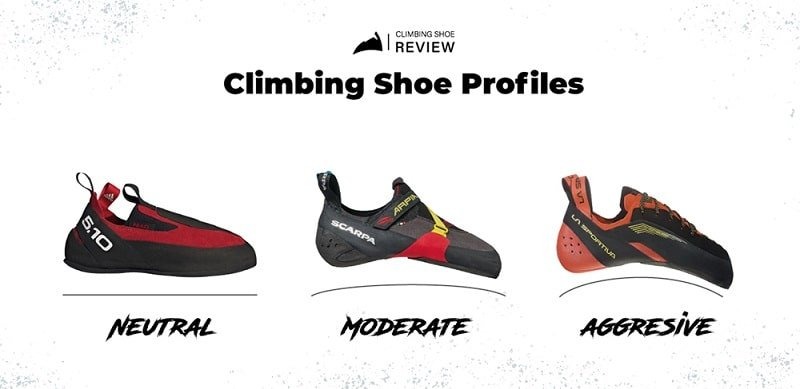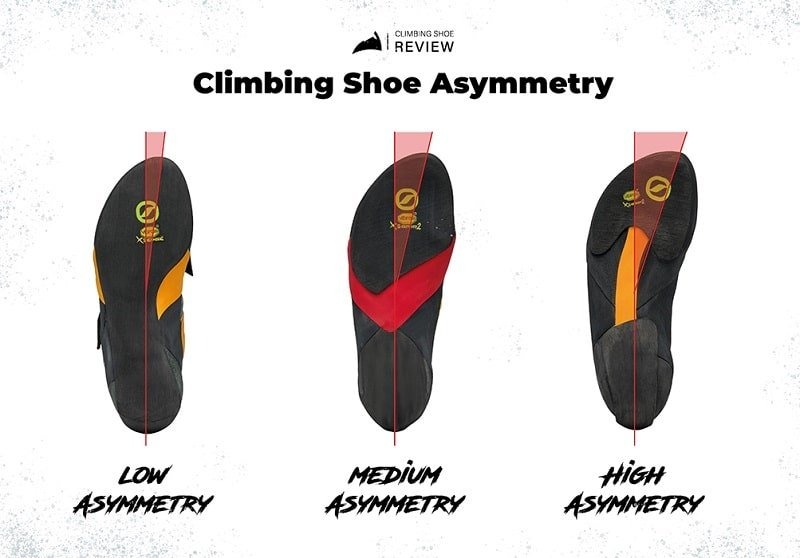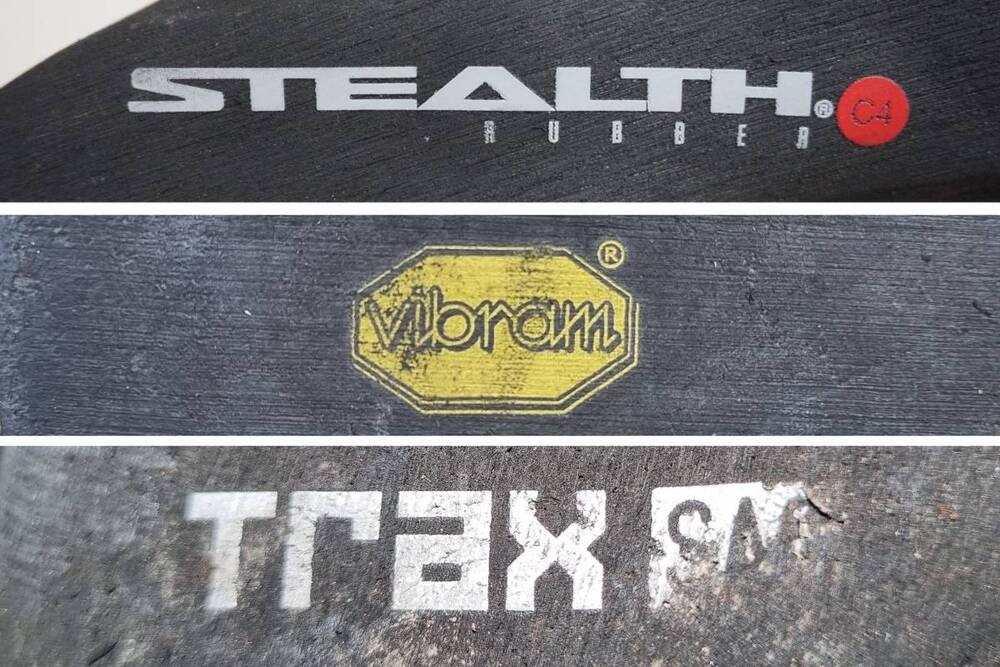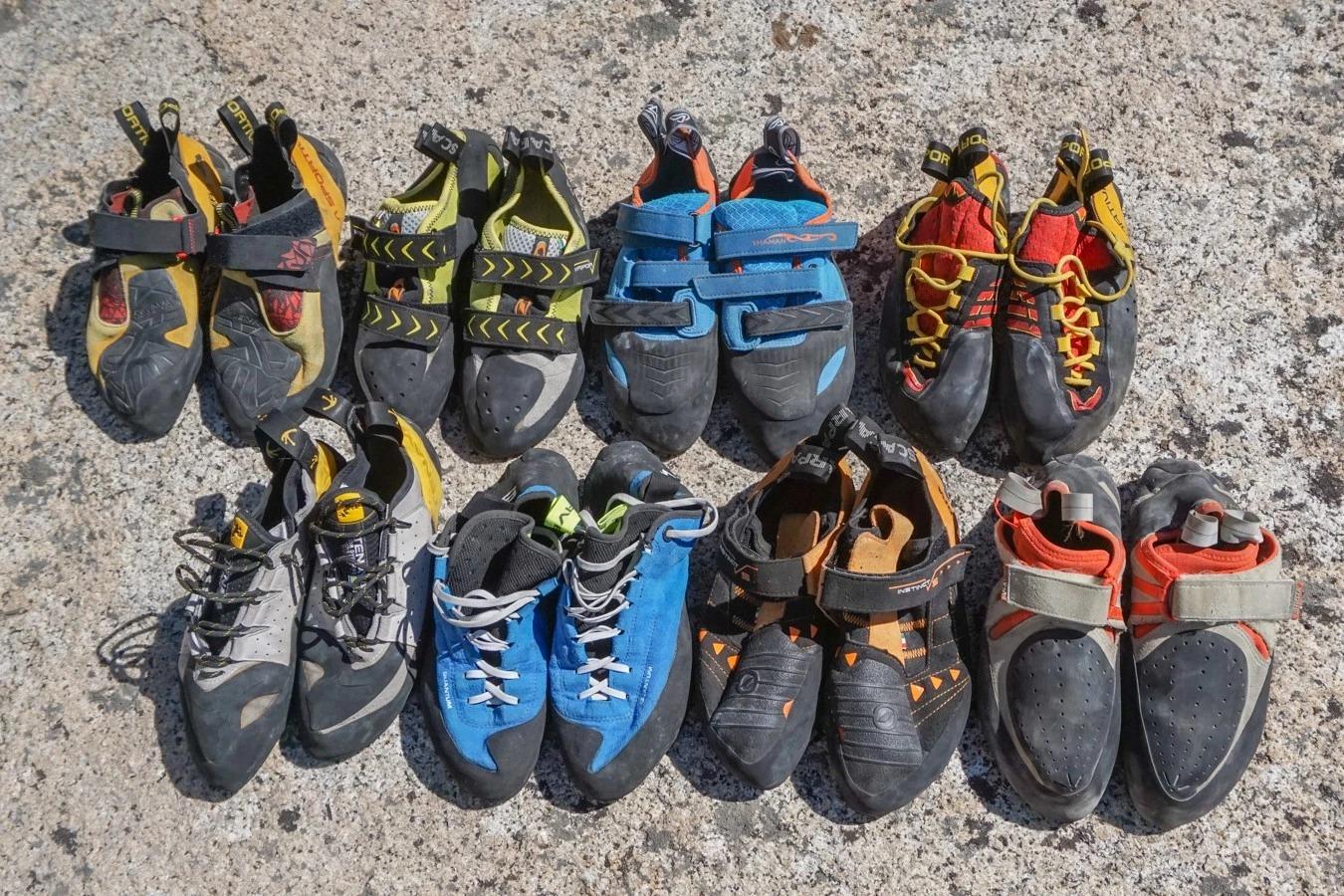Which Shoe Is Right for You?
Choosing a pair of climbing shoes can be a complicated endeavour, especially if you’re just getting started. You might find yourself wondering “What is the difference between all these shoes, anyway?”, “How aggressive should I go?”, and the notorious, “How much should I downsize?”
Well, fret not! This simple guide breaks down a few key factors to consider when choosing your next pair of send slippers or crux crushers so that you can find your perfect match…
Sizing
It can be quite confusing for beginners and seasoned senders alike to figure out exactly what size shoe will work best for them. We’ve all seen a pro climber or YouTuber viciously cramming their feet into impossibly tiny shoes, and many have been given the advice to excessively downsize for the sake of the send… but, even for harder climbing, it’s actually not necessary.
Downsizing slightly can be beneficial as it minimises foot movement within the shoe, allowing for more control, precision and power, which is useful for small footholds and overhangs – but you don’t need to torture yourself.
Shoes should fit like a glove, encapsulating your foot with minimal air pockets (pay special attention to the fit around your toes and heels), which means that they may be uncomfortable, but they should never be painful, make your feet cramp up or, you know, cut off your circulation. You also need to think about what shoe shape will be best for your climbing, but we’ll cover that in the next section!
A good starting point if you’re buying your first pair of shoes is to try out your street shoe size and the one below. You should also try shoes from a few different brands, as there can be some variation in sizes and shapes, to find the one that fits your foot shape best.
Note that as you break in your shoes they will slowly mould to fit your feet and may stretch out – shoes made with synthetic materials have minimal stretch, while leather shoes can grow by almost a full size over time, so take that into consideration when purchasing.
Climbing shoe sizing guides
Ocun Shoe Sizing Guide Evolv Shoe Sizing Guide Scarpa Shoe Sizing Guide La Sportiva Shoe Sizing Guide
Aggression & Asymmetry
As mentioned above, shape is also a vital element to consider when you’re shoe shopping. Aggression and asymmetry both enhance a shoe’s performance but in different ways.
Aggression refers to how downturned a shoe is – a greater downturn (curve) positions your toes for maximum power, which is ideal for overhanging routes and steep terrain.
Asymmetry describes how much the shoe curves inward from the centreline; a more asymmetrical shape concentrates power over the big toe for increased leverage and precision on small holds.
Most high-performance shoes have at least some downturn and asymmetry, but these features aren’t essential for every climber.
If you’re mainly going to be tackling difficult, technical and/or overhanging routes, an aggressive, tighter shoe is probably the one for you (even though you should still avoid downsizing to a pain-inducing degree).
If you’re more likely to spend long periods on the wall (like training at the gym or climbing multi-pitches/trad), or focusing on easier and/or less overhanging routes, it may be better to prioritise comfort and opt for a more neutral shoe.
It has also been argued that a less aggressive shoe can help you polish up your footwork and strengthen your toes by forcing you to rely more on your natural power than your high-performance kicks.
If you’re keen to try some more aggressive shoes but worried about sacrificing comfort, it’s worth noting that you probably won’t be wearing your shoes for your entire climbing session. It’s common practice to take off your shoes when you’re not actively climbing – like in between attempts on boulder problems or when it’s your turn to belay – so don’t shy away from high-performance options just because you can’t stay in them for hours!
Ultimately, the right balance depends on your climbing style and personal preference – try out a wide variety of shapes, sizes and styles until you find that perfect fit.
Rubber
Along with fit and shape, the type of rubber used in a shoe can also make a big difference in performance.
Softer rubber is generally stickier and more sensitive, allowing you to better feel what you are doing on the wall and offering great friction and flexibility, which is ideal for slabby climbs and modern, competition-style routes.
Harder rubber, on the other hand, stands up better to abrasion so your shoes will last longer, and a stiff sole provides more support and power, particularly on smaller edges.
Our softest rubbers include the CAT 1.5 (used in the Ocún Jett QC) and Vibram XS GRIP2 (used in the La Sportiva Solution), while our harder rubbers include the TRAX SAS (used in the Evolv Defy & Elektra) and Vibram XS Edge (used in the Scarpa Instinct).
Odds & Ends
Now that we’ve covered the big questions, let’s look at some of the smaller details to consider when you’re shopping:
Laces vs Velcro
Lace-up shoes offer adjustability, making them great for getting a precise, customised fit; they are also ideal for crack climbing – or any climbing where your shoes will be getting up close and personal with the rock and there’s the potential for straps to snag.
On the downside, they can be a pain to put on and take off, making them better suited to all-day climbing missions than training or projecting sessions.
Toe & Heel Rubber
Along with different types of rubber, you will also find a variety of rubber configurations across climbing shoes – less aggressive shoes tend to have minimal rubber on the upper, while others have rubber wrapping the toes and/or heels for increased grip, protection and leverage in jamming and hooking moves.
Volume
The ‘volume’ of a climbing shoe refers to the shape and size of the shoe’s internal space, and is easiest to understand in terms of foot width and arch height – a higher volume shoe caters to wider/higher feet, while low volume shoes are designed for narrower/flatter feet.
In a Nutshell
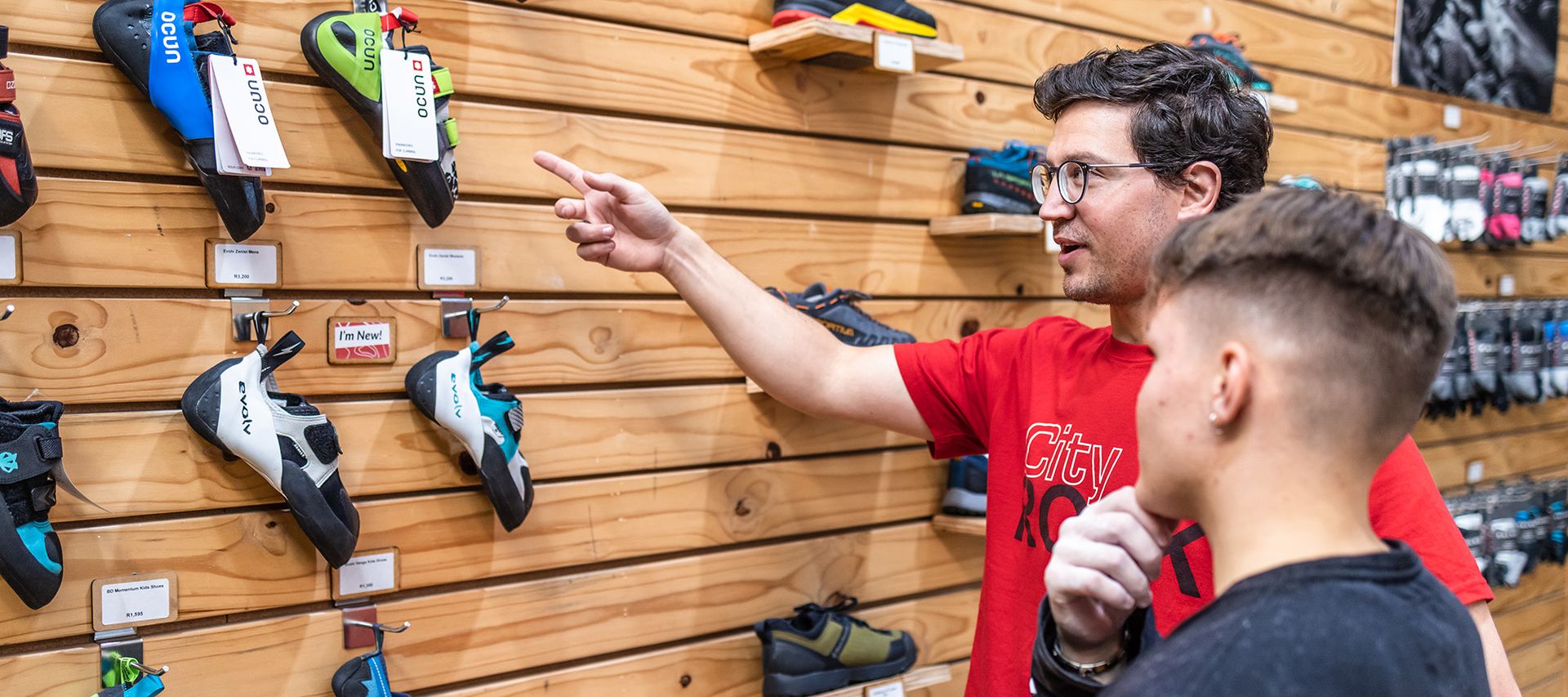
With so many choices to make, shoe selection can be a tricky business, but if you keep these tips in mind you’ll be heading in the right direction!
Again, the best way to find your perfect fit is to try out a wide variety of different shapes, sizes and brands. Ideally, you should also try doing some climbing in the shoes – like on our convenient shoe-testing mini-wall – before making your final decision.
So, come on down to the CityROCK Gear Shop to try out our large selection of shoes from climbing’s favourite brands, and feel free to get an expert opinion from our friendly shop team.
Happy shopping & sending!

By Mark Serfontein
CityROCK Pretoria Gear Shop Assistant
